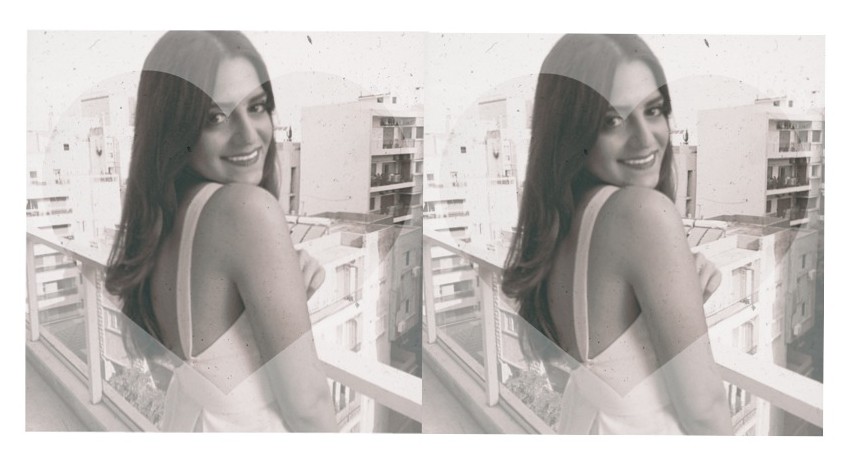
Orange is the New Black; an American comedy-drama series was first released on Netflix in 2013 by its creator Jenji Kohan and is based on Piper Kerman’s memoir and her experiences in a woman’s prison. The story revolves around the main character, Piper Chapman, whom gets sentenced to spend about 15 months in a woman’s federal prison because she had helped transfer a suitcase filled with drug money that belonged to her ex lesbian girlfriend and international drug smuggler, Alex Vause. However, this whole ordeal occurred about 10 years earlier to Piper establishing a life in the Suburbs with her fiancé. (Wikipedia) The entire time Chapman is in Litchfield Penitentiary, she encounters many different characters that each have an episode dedicated to their story and how they got to where they are by the use of flashbacks and memories. Agreeing with what Gaye Tuchman argues that reality really will mirror the media and one of the core arguments given is that: The media distorts women’s status in the social world and do not present [them as] viable role models, (Tuchman, p. 531, par 1) and because the entire show is basically about the incarceration of women in jail it presents them as not equipped to be good role models but instead as “damaged goods.” Nevertheless, the show has ladies who are doing things we have never seen ladies in entertainment do, especially around topics that don’t revolve around men. (McClelland, p. 1, par 5)
Moreover, Orange Is The New Black is depicted as a comedic overview of jail life but this show bluntly uses stereotyping and common ideologies about race and gender throughout the three seasons and I will be using claims retrieved from episode six of season one to showcase that Orange Is The New Black is actually promoting the idea of “whiteness” and “white supremacy” as something ideal while also degrading the status of women in society. People, however, would argue against this by stating that the show has brought an unprecedented diversity (McClelland, p. 1, par 9) and is seen as a platform for women of different race, sexuality, gender and class to speak up about real problems. On the other hand, Tuchman presented the “symbolic annihilation” of women by the media which plays alongside the existence of such a show because once again it presents vulnerable women who got sent to jail and who have to abide by the jail rules mostly under male authority figures.
The writers of this show also included a character known as “Porn Stash;” who terrorizes the women, sexualizes them and takes advantage of them. All of which falls into Tuchman’s idea of “men are shown as aggressors, women as victims.” (Tuchman, p. 531, par 2) The images of women in the show are not being uplifted by the good things they’ve done but instead are classified either by their crimes and violent behavior or by their victimization from men.
Episode six, also called the “WAC Pack”, is about the inmates and their strategies to campaign against one another in order to become the prisoners’ representative. “WAC,” in WWII, was known as “a member [representative] of a United States Army unit created for women.” (Webster) The title is a clever way for the viewers to foretell what the episode is about but what we end up seeing is not one representative for the women but instead racial segregation amongst the inmates with different WACs for the Blacks, the Hispanics, the Whites and the others and I will be using situations between the different WACs as evidence to my claims.
Entman argues that “some believe the real explanation for whites’ hostility to blacks’ striving is not racial prejudice but group-based conflict; these observers think that white resentment arises from competition with black groups over scarce resources.” (Entman, p. 333, par 6) This correlates with the setting of the entire show because it is a representation of the ethnicities in a place where resources are scarce; prison. Also, where the black and the whites do have to compete with one another so that their voices and needs are met.
Furthermore, my first claim of the episode starts off with Natalie Figueroa, who is a white women and the Executive Assistant to the Warden at Litchfield, degrading Joe Caputo by saying that it is so depressing having to deal with a man who earns less than $40,000 a year. The audience would probably regard this as an act of feminism because for once it is a female figure standing up to a man but in reality, Natalie only pities Joe because of his association to a lower working class. We would also notice that the vast majority of the officers and authority figures in charge at this prison are white, which signifies some sort of white power over the different ethnicities in jail. It is when ideologies like these are hidden with smirk remarks, bold actions and comedy that we become passive to their actual meaning.
Moving on, my second claim is about the connection of “being educated” with being white because as the episode continues on to Yoga Jones complaining to Sam Healy, who is in charge of the women’s activities in the prison, about her need to meditate and stresses on the “love and acceptance” aspect of her religion to which a counterargument was made by Tiffany Doggett about Christians having a hard time praying to God with all these meditating Buddhists. Here we clearly see a divide amongst the whites, but nevertheless it is associating whiteness with being religious. To which “Crazy eyes” joins and asks Sam to have a look at her genital area because she thinks she might have the flu. This scene implies 2 things about race: Buddhist religion is to be viewed as not important to Christianity, but both of which are white majority religions and that the Black race isn’t to be regarded as intelligent because genital areas cannot catch “the flu.”
The third and most important claim is about Piper Chapman being used as a tool in the show to justify how racist and stereotypical the show is being because she represents the educated, humble and idealist “white” figure that calls for equality and an effective election system. This claim comes from the conversation between Piper Chapman and her mother because her mother kept asking if her daughter is “okay” but all for the wrong reasons. Piper’s mother states that she wouldn’t blame Piper if she loses it in here and uses phrases like “look at this place, you’re incarcerated!” Which would imply that it would be unusual for a white woman from the upper middle class to go to jail let alone survive it. She then blames Piper’s ex-girlfriend for putting her daughter in jail because piper would instead be “at home trying on wedding dress and giving her grandchildren,” we clearly see what Piper’s mother thinks a woman’s role in society is; to stay at home and be care givers. As Tuchman argues that “[there are] some assumed activities that [show] women in the mass media [to] have some sort of detrimental impact upon individual consciousness and collective social life,” (Tuchman, p. 530, par 2) and the mother’s quote clearly shows us what the writers want us to think of the contribution of women to society which definitely harms their image and their capabilities.
However, the writers of Orange is the New Black cleverly justify all the racism and class distinctions with Piper defending herself and considering all the people in prison as “one.” For example, right after the conversation with her mother, she defends herself with the argument that she is in prison because she is no different than any one else in there and that it’s not because of race, gender, class but because she is the one who made bad decisions and committed the crime. I would think that the writers would want the audience to congratulate Piper for being the white figure that is courageous and humble because she stood up to the ideological ideas of her mother when in reality she is only there as a shrewd tool.
The first flashback of this episode is when one of the inmates, Nicky, tried to anger her mother by saying that she is pretty sure that her real mother was “that brown woman who made her pancakes and read her bedtime stories.” This phrase brings me to my fourth claim because it was said with a clever sarcastic tone implying that women from brown ethnicities are usually employed as housekeepers or nannies while the white parents have the real jobs. This is an example of how race and class correlate, brown nannies are seen as lower working class catering to the whites; white supremacy even in the household.
The next situation that clearly screams racist stereotyping that defends my fifth claim occurs with the scene of a handful of white women at the lunch table with Lorna Morello letting Chapman know how the WAC elections work and that they are only allowed to vote within their race or group to which Nicky replies and tells Piper to pretend like it’s the 1950s so she could understand better. Basically, this scene directly introduces the idea of racial segregations and implies that societies are regressing back in time to an era of ignorance and isolation from one another.
Chapman (the white figure) then realizes and points out that this is not an example of an effective system because not every Hispanic wants the same thing. Again we are witnessing Piper Chapman as the voice of reason and logic and this implies that the white race is actually an intellectual race and is considerate of other ethnicities. Lorna responds with the fact that the Hispanics shouldn’t complain because all they want to do is come to America, she justifies her racist comment by explaining that she lives in a neighborhood of Hispanic majority to which they live 20 to an apartment, they have more kids than the Irish, their men like their women curvy, they are dirty and greasy, their food smells nasty and finally they are taking all “their jobs.” This scene implies that the Hispanics are similar to animals because they are uneducated and undeserving of being in the United States especially when they are taking the white people’s jobs. To understand the context, we have to look at the broader scene and what occurs in it, in this case we see that some of the white girls laughed while others were very shocked, this is a clear example of the white majority ganging up on an ethnic minority, but what the audience fails to notice is that Lorna Morella is actually from Italian descend which is very ironic to the whole situation.
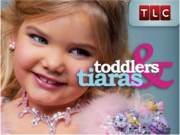

When looking at the broader context, I also noticed that most of the media texts used and referred to all included white characters and the idea of being white. There are 3 examples to which this occurred in the show: The first is when Tasha “Taystee” complains to Mr. Healey about the T.V remote and that she can’t watch any more “Toddlers & Tiaras.” T&T is a show about the competitive world of child pageants where the children, majority of whom are white, are judged on beauty, personality and costumes. (Drobis, TLC.) The second is when Poussè tells Taystee that she wants to watch Ina Garten, which is a show about a white women in the Hamptons that cooks and makes upscale dishes for her and her guests. If we refer to both images of the shows, we would notice the emphasis on “whiteness” and the associations such as beautiful, educated, elite and upscale. Poussè also points out that her name is French and is named after a place of kings and royalty, this implies that the French (whom are considered white) are seen as representatives of those qualities and if she is named after a place in France that she is those qualities too.
My last claim is shown towards the end of the episode with Piper Chapman winning the elections despite having actually electing herself. Instead, Mr. Healey had told her that “it is not often that he comes across intelligent women like herself in a place like this and that she should run and represent the white WACs,” to which she responded that she wasn’t interested but he took it upon himself to make her win otherwise. This scene explicitly showcases how the “whites” stick together and how people like Mr. Healy despite having to run a prison of different ethnicities, still believes that the world is a better place when white people are in charge because no harm can be done that way and that this is how things should be anyway.
When watching any type of media texts, we often are very passive towards the messages and ideologies that present themselves in a humoristic manner that Entman argues “is a modern form of racism that has arisen” (Entman, p. 332, par 1) to which we have fallen to accept. However, Colin Leach would argue that this is no such thing as modern racism, the subtleness that we associate with racism now has always existed and the notion of ‘new racism’ may actually work to prevent a much needed critical social psychological conceptualization of racism. (Leach, p. 434, par. 4) So, it is only when we stop for a second and invest the time to properly analyze what each word, symbol, reference, joke etc. is about or revolves back to, do we actually see the extent of how naïve we could be towards their effect on us and the long term effect in the future.



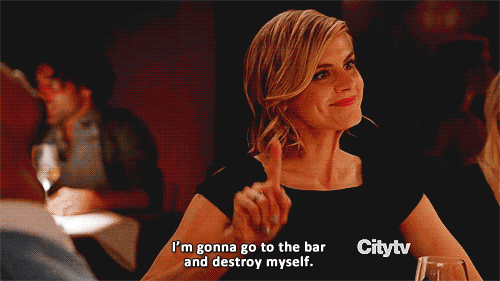
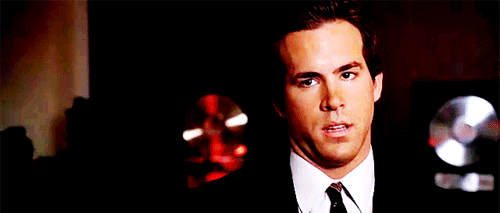 (Can we just take a moment and stare at Ryan Reynolds *drool*)
(Can we just take a moment and stare at Ryan Reynolds *drool*)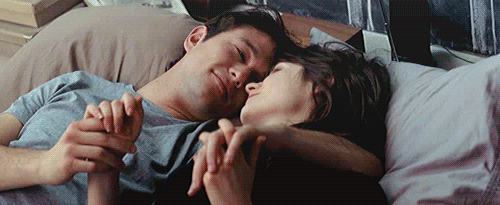 (Imagine that but like less cute)
(Imagine that but like less cute)
